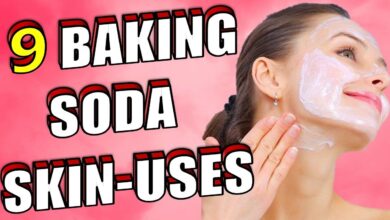
1. Using Whitening Toothpaste
One of the simplest and most accessible methods to whiten teeth is whitening toothpaste. These toothpaste types contain mild abrasives that help remove surface stains and chemicals that act as a whitening agent. It is essential to choose a toothpaste specifically designed for teeth whitening and brush your teeth at least twice a day for optimal results.
2. Trying Baking Soda and Hydrogen Peroxide
Baking soda and hydrogen peroxide are natural teeth-whitening agents that can effectively remove surface stains on teeth. Brushing your teeth with a paste from these ingredients can help remove stains and yellowing. Baking soda is a mild abrasive, while hydrogen peroxide is a bleaching agent.
However, using this method in moderation and not too frequently is essential, as excessive use can potentially damage tooth enamel. Simply mix a small amount of baking soda with hydrogen peroxide to make a paste, then brush your teeth with the mixture for 2-3 minutes before rinsing.
3. Using Whitening Strips
Whitening strips are thin, flexible strips coated with a peroxide-based whitening gel. These strips are placed directly onto the teeth and left for a specific period, usually around 30 minutes. The peroxide in the gel penetrates the enamel to bleach the underlying dentin and remove stains. Whitening strips are convenient and provide noticeable results within a few weeks of regular use.
What Are Some Home Remedies to Whiten Teeth?
4. Using Coconut Oil Pulling
Coconut oil pulling is an ancient Ayurvedic practice that can help whiten your teeth naturally. This method involves swishing a tablespoon of natural coconut oil in your mouth for 15-20 minutes and then spitting it out. The oil acts as a natural cleanser and removes bacteria and toxins from the mouth, helping to whiten teeth over time. However, it is essential to note that coconut oil pulling should not replace regular brushing and flossing.
5. Trying Baking Soda and Lemon Juice
Another natural teeth-whitening method involves mixing baking soda with freshly squeezed lemon juice to create a paste. The citric acid in the lemon juice acts as a natural bleaching agent, while the baking soda helps remove stains. However, like the baking soda and hydrogen peroxide method, this should be used in moderation as the acidic nature of lemon juice can potentially erode tooth enamel.
6. Brushing with Activated Charcoal
Activated charcoal is a trendy natural teeth-whitening remedy. It is believed to absorb stains and toxins from the teeth effectively. To use activated charcoal for teeth whitening, wet your toothbrush and dip it into the activated charcoal powder. Gently brush your teeth for 2-3 minutes, then rinse thoroughly. It is important to note that activated charcoal can be messy and may stain your sink, so caution is advised when using this method.
How Effective Are At-Home Teeth Whitening Kits?
1. Understanding the Different Types of Whitening Kits
At-home teeth whitening kits are a popular option for those who want to whiten their teeth without visiting a dentist. These kits typically come with a whitening gel or strips that contain hydrogen peroxide as the active ingredient. Various types of kits are available, including tray-based systems, whitening pens, and LED light kits. Understanding the different types of kits can help you choose the one that suits your needs best.
2. Applying the Whitening Gel or Strips
When using an at-home teeth whitening kit, it is crucial to follow the instructions carefully. Typically, the whitening gel or strips must be applied directly to the teeth and left for a specific duration. It is important not to exceed the recommended time as this can cause tooth sensitivity or gum irritation. Consistency is also key to achieving the desired results, so use the kit as directed over the recommended period.
3. Following the Instructions and Maintaining Consistency
For at-home teeth whitening kits to be effective, it is essential to follow the instructions provided. This includes the frequency of use and the duration of each application. Additionally, maintaining consistency is crucial. Skipping applications or neglecting to use the kit regularly can hinder whitening. Patience and diligence are key when using at-home teeth whitening kits.
What Are Popular Ways to Whiten Yellow Teeth?
1. Using Whitening Toothpaste for Yellow Teeth
Yellow teeth can result from various factors, including age, genetics, and lifestyle habits. Using whitening toothpaste designed explicitly for yellow teeth can help remove surface stains and gradually lighten the color of your teeth. These toothpaste types often contain additional ingredients specifically targeting yellowing, such as silica and enzymes. In addition, look for toothpaste that contains hydrogen peroxide or baking soda for best results.
These fast and effective teeth whitening methods can help you achieve a brighter, whiter smile from the comfort of your home. However, it’s important to note that these methods may not be suitable for everyone and could cause sensitivity or other side effects. If you have concerns about teeth whitening or any other dental issue, consult your dentist before trying any at-home treatments.
2. Trying Whitening Strips or Pens for Yellow Teeth
Over-the-counter teeth whitening strips or pens can also effectively treat yellow teeth. The peroxide-based gel or solution in these products can penetrate the enamel and bleach the underlying dentin, helping to reduce the yellow appearance. Regular use of whitening strips or pens can result in noticeable whitening over time. This method works by applying a thin layer of hydrogen peroxide gel to the teeth, which is left on for a specified amount before removal. Be sure to follow the instructions carefully for best results.
3. Considering Professional Whitening Treatment for Severe Yellowing
If your yellow teeth are severe or resistant to at-home remedies, seeking professional teeth whitening treatment may be necessary. Dentists offer various in-office whitening procedures that significantly whiten your teeth in less time. These treatments often involve using more potent whitening agents and specialized equipment to achieve optimal results.
What Are the Best Ways To Prevent Teeth Stains?

1. Regular Brushing and Flossing
An excellent oral hygiene routine is the best way to prevent tooth stains. Brush your teeth at least twice a day using fluoride toothpaste and floss daily to remove plaque and food particles that can contribute to staining. Regular brushing and flossing help maintain the cleanliness and whiteness of your teeth.
2. Limiting Consumption of Staining Foods and Drinks
Certain foods and drinks, such as coffee, tea, red wine, and berries, can stain your teeth over time. Limiting your consumption of these staining substances or rinsing your mouth with water after consuming them can help minimize staining. Using a straw when drinking beverages that can stain your teeth is also advisable to reduce contact with the enamel.
3. Quitting Smoking or Tobacco Use
Smoking or using tobacco products poses various health risks and can cause severe teeth staining. The nicotine and tar in cigarettes can turn your teeth yellow or brown over time. Quitting smoking or tobacco use can significantly improve the whiteness of your teeth and overall oral health. Quitting tobacco use benefits overall health and contributes to maintaining a bright smile.
Looking For Something Even More Powerful? Here’s a Safe and Trusted Product for Teeth Whitening:
If you have tried every natural way of whitening your teeth and you want something more powerful, it’s important you try FortBite.
Discover the groundbreaking benefits of using FortBite, a revolutionary oral strong-tooth supporting solution that not only improves gum health but also aids in achieving a whiter, more radiant smile.
After extensive research, scientists have uncovered a crucial factor behind dental issues – “silent reflux.” This condition is very common and allows harmful acids to reach the mouth, breaking down its natural defenses and leading to the gradual deterioration of oral health.
FortBite addresses this issue at the start, promoting a healthy balance in the digestive system and preventing acid reflux, ultimately fortifying the teeth and safeguarding against tooth decay.
To fully grasp why tooth decay occurs, it’s essential to understand the role of oral bacteria. Our mouths are teeming with various types of bacteria, both good and bad. When we consume sugary or starchy foods, these harmful bacteria feed on the leftovers, producing acids that attack the tooth enamel.
Repeated exposure to these acids weakens the enamel, leading to cavities and decay over time. Poor oral hygiene, inadequate brushing, and irregular dental checkups can exacerbate the problem, leaving our teeth vulnerable to decay and sensitivity.




